
OceansArt.US
|
The Zoológico de Quito (Quito Zoo), which was originally in the Benalcázar parish of the city of Quito, was moved in 1997 to the southwest of the parish, and has been operated since 1999 by the Fundación Zoológica del Ecuador. The zoo is the largest zoo in Ecuador.
Quito, the capital of Ecuador, lies in northwestern  South
America. It was founded in
the 16th century on the ruins of an Inca city and stands at an altitude of
2,850 m. Despite the 1917 earthquake, the city has the best-preserved, least
altered historic centre in Latin America. The monasteries of San Francisco
and Santo Domingo, and the Church and Jesuit College of La Compañía, with
their rich interiors, are pure examples of the 'Baroque school of Quito',
which is a fusion of Spanish, Italian, Moorish, Flemish and indigenous art
(Source: UNESCO). Its coat of arms (Escudo de Armas de la Ciudad de San Francisco
de Quito) awarded in 1541, appears to the left.
South
America. It was founded in
the 16th century on the ruins of an Inca city and stands at an altitude of
2,850 m. Despite the 1917 earthquake, the city has the best-preserved, least
altered historic centre in Latin America. The monasteries of San Francisco
and Santo Domingo, and the Church and Jesuit College of La Compañía, with
their rich interiors, are pure examples of the 'Baroque school of Quito',
which is a fusion of Spanish, Italian, Moorish, Flemish and indigenous art
(Source: UNESCO). Its coat of arms (Escudo de Armas de la Ciudad de San Francisco
de Quito) awarded in 1541, appears to the left.
Quito, officially San Francisco de Quito, is located in northern Ecuador in the Guayllabamba river basin, on the eastern slopes of Pichincha, an active stratovolcano in the Andes mountains (see map). With an estimated population of about 2.1 million people as of 2007, Quito is the second most populous city in Ecuador, after Guayaquil. It is also the seat of the Quito Metropolitan District, home to 2 million residents, and the capital of the Pichincha province. As the headquarters of the newly-formed Union of South American Nations, Quito is also the de facto capital of South American integration. The city's elevation is, on average, 2,800 m (about 9,200 ft), making Quito the second highest capital city in the world.
Quito is about 15 miles (25 km) south
of the equator. A monument and museum marking the general location of the equator
is known locally as la mitad del mundo (the middle of the world). Due to 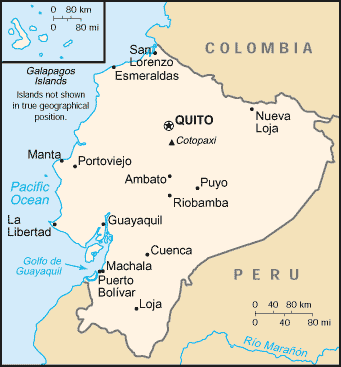 its
high altitude and position on the equator, Quito has a constant, mild to cool
climate year 'round. The typical high temperature at noon is 26°C (78ºF) and
the typical night-time low is 7°C (55ºF). The average temperature is 15° C
(64ºF).
The city experiences only two seasons: dry and wet. The dry season, June
through September, is referred to as summer; the wet season, October through
May, is referred to as winter. Because of its location at the equator, Quito
does not experience variations in daylight hours during the course of a year.
Except for a few minutes resulting from a slight wobble in the earth as it
rotates, sunrise and sunset are always at 6:00 a.m. and 6:00 p.m., respectively.
Although it is in the same time zone as the eastern United States (except for
the Galápagos
Islands, which correspond to the U.S. central time zone), Ecuador does not
switch to daylight savings time. It is interesting to note that while Ecuador
is on the Pacific coast of South America, the city of Quito is due south
of Pittsburgh, Pennsylvania.
its
high altitude and position on the equator, Quito has a constant, mild to cool
climate year 'round. The typical high temperature at noon is 26°C (78ºF) and
the typical night-time low is 7°C (55ºF). The average temperature is 15° C
(64ºF).
The city experiences only two seasons: dry and wet. The dry season, June
through September, is referred to as summer; the wet season, October through
May, is referred to as winter. Because of its location at the equator, Quito
does not experience variations in daylight hours during the course of a year.
Except for a few minutes resulting from a slight wobble in the earth as it
rotates, sunrise and sunset are always at 6:00 a.m. and 6:00 p.m., respectively.
Although it is in the same time zone as the eastern United States (except for
the Galápagos
Islands, which correspond to the U.S. central time zone), Ecuador does not
switch to daylight savings time. It is interesting to note that while Ecuador
is on the Pacific coast of South America, the city of Quito is due south
of Pittsburgh, Pennsylvania.
(Text and map of Ecuador adapted from: Quito (2008). From Wikipedia, The Free Encyclopedia)
See all the free photos, including other photos of Ecuador and the Galapagos Islands by going to the Photo Catalog. Click on any picture for a FREE larger version. Read the licensing rules (REVISED) for your needs. There are hundreds of high quality free photos: use the Google/site search engine. See our digital photography tips : DOs and Don'ts; Choosing a Camera and Accessories , Downloading Photos, and Editing Photos. Visit TechnologySite.org for free photos and lists of inventions and technology and learn Climate Change Facts to see for yourself if your area is at risk from global warming or global cooling.
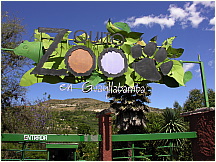 01quitozoo.jpg Welcome sign at the entrance to the Quito Zoo. Zoológico de Guayllabamba |
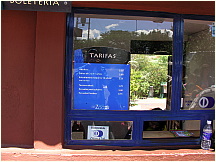 02quitozoo.jpg List of entrance fees - not the third age (for retirees) fees, at the the Quito Zoo. Zoológico de Guayllabamba |
The YouTube collection of videos of Ecuador
|
|
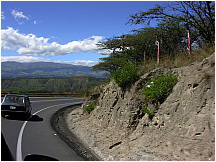 03quitozoo.jpg Beautiful landscape enroute to Guayllabamba, home of the Quito Ecuador zoological park |
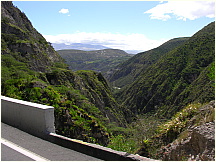 04quitozoo.jpg Beautiful landscape enroute to Guayllabamba, home of the Quito Ecuador zoological park |
||
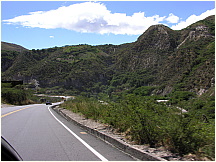 05quitozoo.jpg Beautiful landscape enroute to Guayllabamba, home of the Quito Ecuador zoological park |
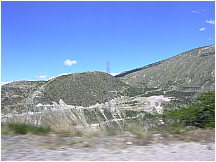 06quitozoo.jpg Quarry enroute to Guayllabamba, home of the Quito Ecuador zoological park |
||
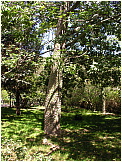 07quitozoo.jpg Tree with thorny bark at the Quito Ecuador zoological park |
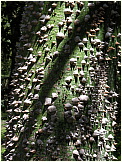 08quitozoo.jpg Thorny bark at the Quito Ecuador zoological park |
||
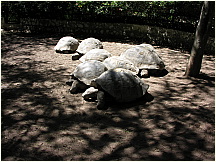 09quitozoo.jpg Tortoises from the Galapagos (Tortuga galapago (Geochelone nigra (elepahantopus)) Quito Ecuador zoo |
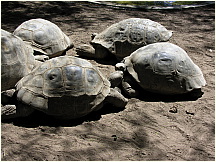 10quitozoo.jpg Tortoises from the Galapagos (Tortuga galapago (Geochelone nigra (elepahantopus)) Quito Ecuador zoological park |
||
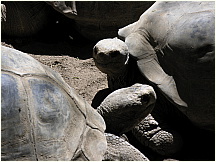 11quitozoo.jpg Tortoises from the Galapagos (Tortuga galapago (Geochelone nigra (elepahantopus)) Quito Ecuador zoological park |
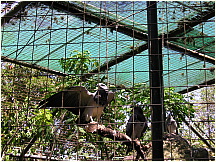 12quitozoo.jpg Guaro raptor at the Quito Ecuador zoological park at Guayllabamba |
||
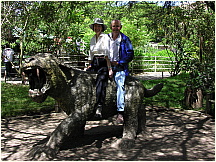 13quitozoo.jpg OceansArt photographers Kris and John at the Quito Ecuador zoological park at Guayllabamba |
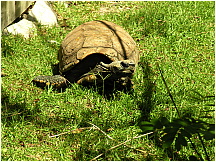 14quitozoo.jpg Tortoise at the Quito Ecuador zoological park at Guayllabamba |
||
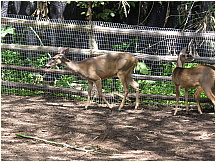 15quitozoo.jpg White-tail deer (venado de cola blanca) at the Quito Ecuador zoological park at Guayllabamba |
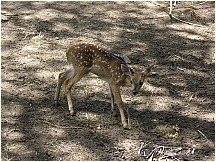 16quitozoo.jpg White-tail deer fawn (venado de cola blanca) at the Quito Ecuador zoological park at Guayllabamba |
||
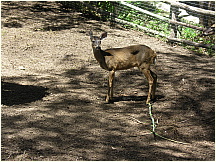 17quitozoo.jpg White-tail deer (venado de cola blanca) at the Quito Ecuador zoological park at Guayllabamba |
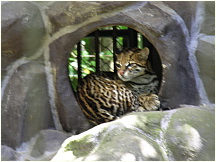 18quitozoo.jpg Tigrillo (Leopardus pardalis) at the Quito Ecuador zoological park at Guayllabamba |
||
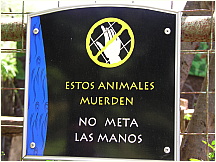 19quitozoo.jpg Sign not common in USA zoos: These animals kill - don't insert your hands |
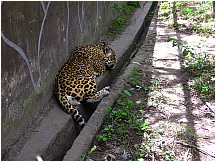 20quitozoo.jpg Jaguar at the Quito Ecuador zoological park at Guayllabamba |
||
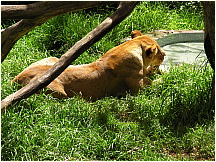 21quitozoo.jpg African lioness at the Quito Ecuador zoological park at Guayllabamba |
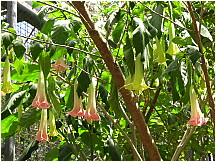 22quitozoo.jpg Trumpet flower at the Quito Ecuador zoological park at Guayllabamba |
||
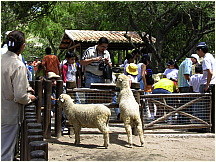 23quitozoo.jpg Sheep at the petting area of the Quito Ecuador zoological park at Guayllabamba |
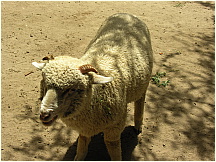 24quitozoo.jpg Sheep at the petting area of the Quito Ecuador zoological park at Guayllabamba |
||
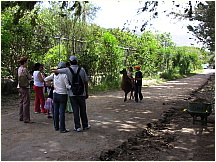 25quitozoo.jpg Girl riding a llama at the Quito Ecuador zoological park at Guayllabamba |
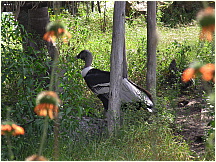 26quitozoo.jpg Andean condor at the Quito Ecuador zoological park at Guayllabamba |
||
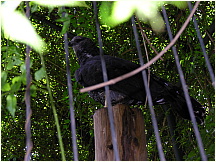 27quitozoo.jpg Monkey Eagle (Aguila Monera) - Morphnus guianensis - at the Quito Ecuador zoological park at Guayllabamba |
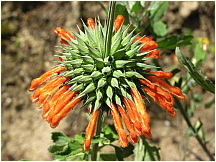 28quitozoo.jpg Bright orange flower at the Quito Ecuador zoological park at Guayllabamba |
||
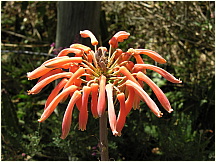 29quitozoo.jpg Bright orange flower at the Quito Ecuador zoological park at Guayllabamba |
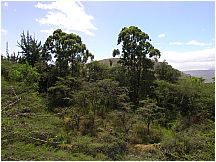 30quitozoo.jpg Dry terrain at the Quito Ecuador zoological park at Guayllabamba |
||
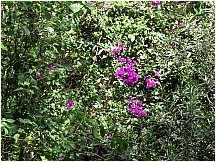 31quitozoo.jpg Bright purple tree flower at the Quito Ecuador zoological park at Guayllabamba |
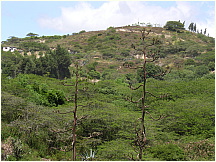 32quitozoo.jpg Dry terrain at the Quito Ecuador zoological park at Guayllabamba |
||
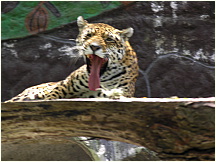 33quitozoo.jpg Lazy jaguar at the Quito Ecuador zoological park at Guayllabamba |
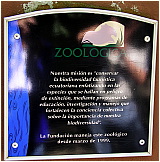 34quitozoo.jpg Mission Statement of La Fundación Zoológica del Ecuador (FZE), which administers the Quito Zoo |
UNDACIÓN ZOOLÓGICA DEL ECUADOR
Zoológico de Guayllabamba
Nace como una iniciativa de la Sociedad Civil y su misión
institucional es "conservar la biodiversidad faunística
ecuatoriana, poniendo énfasis en las especies que se hallan
en peligro de extinción, mediante proyectos y programas de
investigación, manejo y educación encaminados a fortalecer
la conciencia colectiva sobre la importancia de nuestra biodiversidad.
Desde marzo de 1999, es la institución encargada de la administración del Zoológico de Quito en Guayllabamba. La Fundación, a través del manejo del Zoo, trabaja en las siguientes áreas:
Quito ZOO en Guayllabamba
El zoológico se abre al público el 18 de agosto de 1997. La Fundación Zoológica del Ecuador (FZE) administra el Zoológico de Quito en Guayllabamba desde marzo de 1999. Se trata de la colección más grande del país de fauna nativa abierta al público. La mayor parte de esta proviene del antiguo Zoológico del Colegio Militar, a la que se ha sumado varios animales producto del tráfico.
El Zoológico se encuentra en la población de Guayllabamba a 29 Km de Quito, tiene una extensión de 12 has, 5 están ocupadas por 24 encierros donde se exhiben aproximadamente 180 individuos. La muestra incluye, aproximadamente, 45 especies de fauna nativa, representantes de diversas ecoregiones del país, desde los páramos hasta los bosques tropicales de la Costa y Amazonía y las Islas Galápagos.
Desde su apertura se ha experimentado un éxito muy importante por la recepción masiva de la población (un promedio de 17000 visitantes mensuales) de la ciudad de Quito, sus alrededores y del país en general.
El zoológico ofrece a la comunidad una experiencia educativa recreativa, recibe anualmente alrededor de 800 planteles educativos, para los cuales, este espacio se convierte en un recurso didáctico interactivo que promueve la valoración de nuestra fauna.
Constituye, además, un laboratorio viviente en el cual se realizan proyectos de investigación y manejo que apoyan a la conservación de la fauna ecuatoriana. Las áreas de acción del Zoológico son:
Áreas de Educación:
Tiene como objetivo principal convertir al Zoológico en un espacio educativo que permita desarrollar planes y programas que promuevan el conocimiento y valoración de nuestra fauna ecuatoriana.
Área de Manejo:
Está orientado a mantener en óptimas condiciones una colección representativa de fauna ecuatoriana, de acuerdo al plan de colección previamente establecido y manteniendo a los animales en exhibidores ambientados, de acuerdo a su hábitat natural.
Área Veterinaria:
Su propósito es el de aplicar medicina preventiva y tratamientos técnicos que permitan el bienestar y salud de los animales de la colección. Además, se encarga de implementar una dieta balanceada para una nutrición adecuada de la fauna.
Mamíferos
Únicos en América del Sur como el jaguar, el oso de anteojos y el lobo de páramo, especies que se hallan amenazadas principalmente por la pérdida de sus hábitats. Y, alrededor de 23 especies entre monos, ardillas, puercos sahinos, pumas y otros. La única especie exótica es el gran león africano.
Aves: 21 coloridas especies entre guacamayos, loros, águilas,
tucanes y otros.
Se exhibe al cóndor andino, el ave voladora más grande
del mundo.
Reptiles: la tortuga galápago, única en el mundo, por su tamaño y longevidad.
Servicios:
Visitas organizadas a grupos guiados; los fines de semana y feriados
son gratuitas.
Charlas y otras actividades educativas.
Programas especiales durante los feriados.
Además:
Servicio permanente de cafetería
Acceso y facilidades para discapacitados
Área de recreación infantil
Recuerdos con motivos del zoológico
Pago con tarjeta Diners
Horarios de atención:
(Adaptatdo de: www.quito.gov.ec/turismo/t_zoo.htm)
This page last updated January 2015
Visit http://www.TechnologySite.org for free
photos and lists of inventions and technology. Visit http://www.ClimateChangeFacts.info for unbiased
information about climate change. Visit http://www.ClimateCooling.org for eye-opening
biased information on global cooling and climate change and visit http://www.OceanAssoc.com for fisheries
and oceans consulting services.